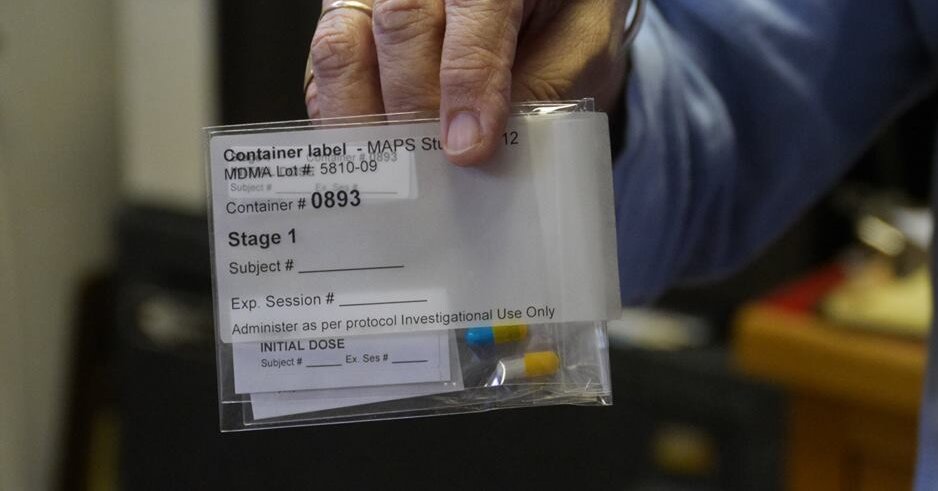Rates Are Jumping on Wall Street. What Will It Do to Housing and the Economy?
Heather Mahmood-Corley, a real estate agent, was seeing decent demand for houses in the Phoenix area just a few weeks ago, with interested shoppers and multiple offers. But as mortgage rates pick up again, she is already watching would-be home buyers retrench.
“You’ve got a lot of people on edge,” said Ms. Mahmood-Corley, a Redfin agent who has been selling houses for more than eight years, including more than five in the area.
It’s an early sign of the economic fallout from a sharp rise in interest rates that has taken place in markets since the middle of the summer, when many home buyers and Wall Street traders thought that borrowing costs, which had risen rapidly, might be at or near their peak.
Rates on longer-term government Treasury bonds have been climbing sharply, partly because investors are coming around to the belief that the Federal Reserve may keep its policy rate higher for longer. That adjustment is playing out in sophisticated financial markets, but the fallout could also spread throughout the economy.
Higher interest rates make it more expensive to finance a car purchase, expand a business or borrow for a home. They have already prompted pain in the heavily indebted technology industry, and have sent jitters through commercial real estate markets.
The increasing pressure is partly a sign that Fed policy is working: Officials have been lifting borrowing costs since March 2022 precisely because they want to slow the economy and curb inflation by discouraging borrowing and spending. Their policy adjustments sometimes take a while to push up borrowing costs for consumers and businesses — but are now clearly passing through.
Yet there is a threat that as rates ratchet higher across key parts of financial markets, they could accidentally wallop the economy instead of cooling it gently. So far, growth has been resilient to much higher borrowing costs: Consumers have continued to spend, the housing market has slowed without tanking, and businesses have kept investing. The risk is that rates will reach a tipping point where either a big chunk of that activity grinds to a halt or something breaks in financial markets.
“At this point, the amount of increase in Treasury yields and the tightening itself is not enough to derail the economic expansion,” said Daleep Singh, chief global economist at PGIM Fixed Income. But he noted that higher bond yields — especially if they last — always bring a risk of financial instability.
“You never know exactly what the threshold is at which you trigger these financial stability episodes,” he said.
While the Fed has been raising the short-term interest rate it controls for some time, longer-dated interest rates — the sort that underpin borrowing costs paid by consumers and companies — have been slower to react. But at the start of August, the yield on the 10-year Treasury bond began a relentless march higher to levels last seen in 2007.
The recent move is most likely the culmination of a number of factors: Growth has been surprisingly resilient, which has led investors to mark up their expectations for how long the Fed will keep rates high. Some strategists say the move reflects growing concerns about the sustainability of the national debt.
“It’s everything under the sun, but also no single factor,” said Gennadiy Goldberg, head of interest rate strategy at TD Securities. “But it’s higher for longer that has everyone nervous.”
Whatever the causes, the jump is likely to have consequences.
Higher rates have already spurred some financial turmoil this year. Silicon Valley Bank and several other regional lenders imploded after they failed to protect their balance sheets against higher borrowing costs, causing customers to pull their money.
Policymakers have continued to watch banks for signs of stress, especially tied to the commercial real estate market. Many regional lenders have exposure to offices, hotels and other commercial borrowers, and as rates rise, so do the costs to finance and maintain the properties and, in turn, how much they must earn to turn a profit. Higher rates make such properties less valuable.
“It does add to concerns around commercial real estate as the 10-year Treasury yield rises,” said Jill Cetina, an associate managing director at Moody’s Investors Service.
Even if the move up in rates does not cause a bank or market blowup, it could cool demand. Higher rates could make it more expensive for everyone — home buyers, businesses, cities — to borrow money for purchases and expansions. Many companies have yet to refinance debt taken out when interest rates were much lower, meaning the impact of these higher interest rates is yet to fully be felt.
“That 10-year Treasury, it’s a global borrowing benchmark,” said Greg McBride, chief financial analyst for Bankrate.com. “It’s relevant to U.S. homeowners, to be sure, but it’s also relevant to corporations, municipalities and other governments that look to borrow in the capital markets.”
For the Fed, the shift in long-term rates could suggest that its policy setting is closer to — or even potentially at — a level high enough to ensure that the economy will slow further.
Officials have raised rates to a range of 5 to 5.25 percent, and have signaled that they could approve one more quarter-point increase this year. But markets see less than a one-in-three chance that they will follow through with that final adjustment.
Mary Daly, president of the Federal Reserve Bank of San Francisco, said markets were doing some of the Fed’s work for it: On Thursday, she said the recent move in longer-term rates was equivalent to “about” one additional interest rate increase from the Fed.
Yet there are questions about whether the pop in rates will last. Some analysts suggest there could be more room to rise, because investors have yet to fully embrace the Fed’s own forecasts for how long they think rates will remain elevated. Others are less sure.
“I think we’re near the end of this tantrum,” Mr. Singh said, noting that the jump in Treasury yields will worsen the growth outlook, causing the Fed itself to shift away from higher rates.
“One of the reasons that I think this move has overshot is that it’s self-limiting,” he said.
Plenty of people in the real economy are hoping that borrowing costs stabilize soon. That includes in the housing market, where mortgage rates are newly flirting with an 8 percent level, up from less than 3 percent in 2021.
In Arizona, Ms. Mahmood-Corley is seeing some buyers push for two-year agreements that make their early mortgage payments more manageable — betting that after that, rates will be lower and they can refinance. Others are lingering on the sidelines, hoping that borrowing costs will ease.
“People take forever now to make a decision,” she said. “They’re holding back.”
”


